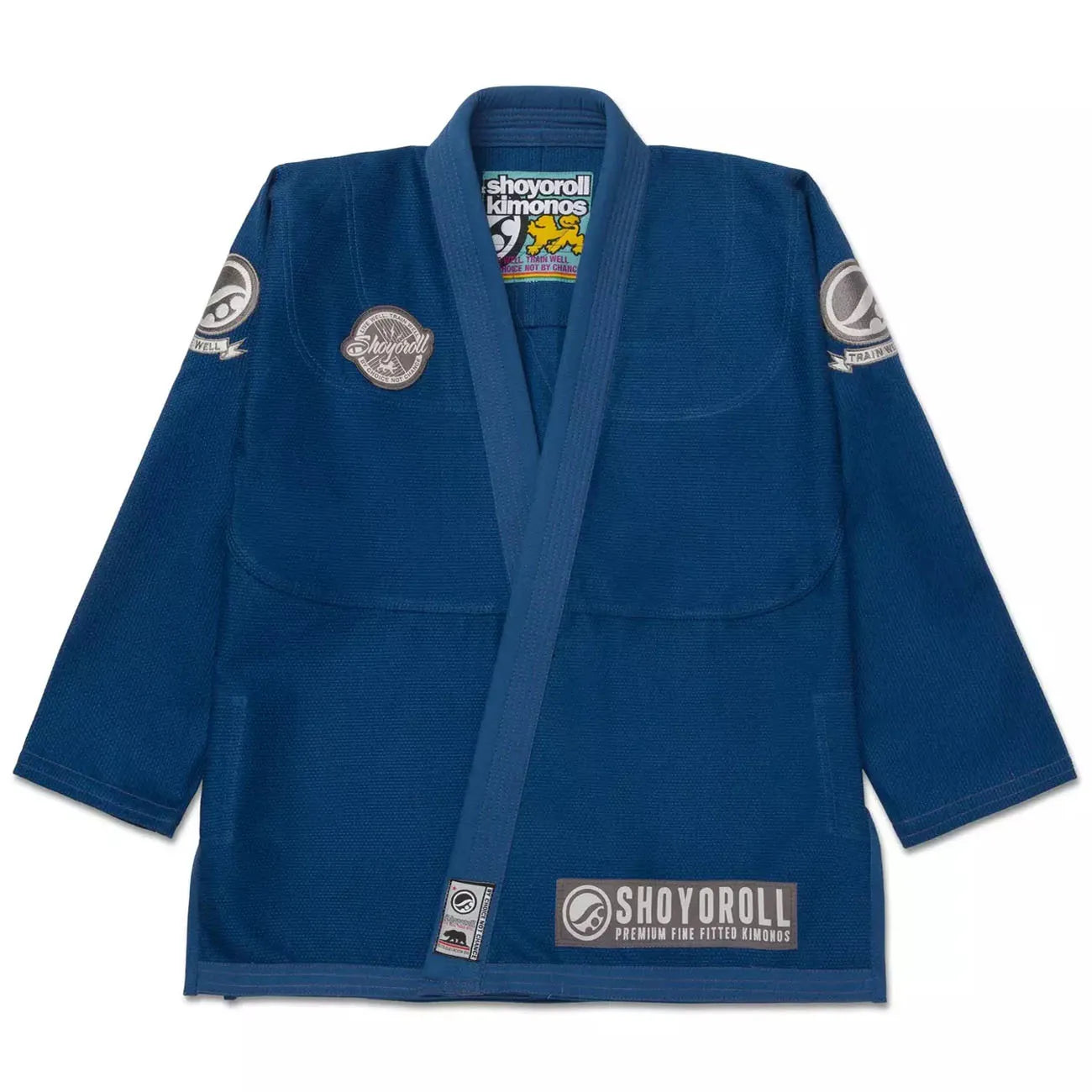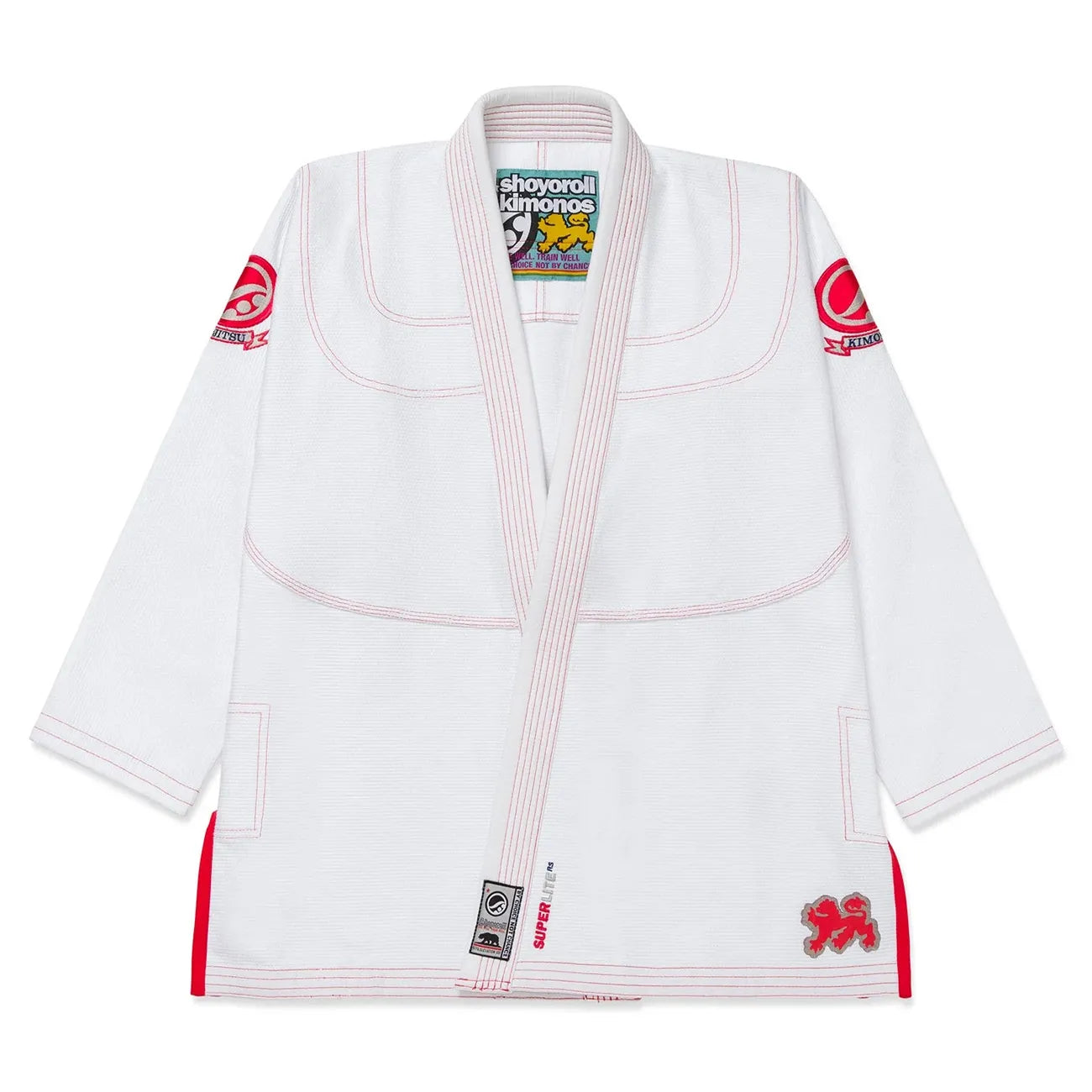Jiu Jitsu for Self Defence: Master Secret Techniques to Stay Safe
Table of Contents
- Why is Jiu Jitsu the Ultimate Self-Defence Martial Art?
- Japanese Jiu Jitsu vs. Brazilian Jiu Jitsu: Which is Better for Self-Defence?
- Most Important Jiu Jitsu Self Defense Techniques Everyone Should Know
- Can Jiu Jitsu Be Self-Taught for Self Defence?
- How Much Jiu Jitsu Do You Need for Self-Defence?
- What is Jiu Jitsu’s Weakness?
- Final Thoughts: Is Jiu Jitsu the Best Self-Defence System?
- FAQs: About Jiu Jitsu for Self Defence
In today's world, knowing how to defend yourself is an important skill. Whether walking home alone at night or facing an aggressive attacker, having the right techniques can make all the difference. Jiu jitsu for self defence is one of the most effective martial arts for real-world situations.
Unlike striking-based martial arts, it focuses on control, technique, and leverage rather than brute strength. This makes it ideal for people of all sizes, including those with no prior combat experience.
Brazilian jiu jitsu, also known as BJJ, is gaining popularity as a top self-defence system. It teaches people how to escape dangerous situations, control their opponent, and even subdue them without causing serious harm.
In this article, we’ll explore why jiu jitsu self defence is so effective, how much training is needed, and whether it can be self-taught. If you're looking for a powerful way to stay safe, keep reading to learn more about this incredible martial art.
Why is Jiu Jitsu the Ultimate Self-Defence Martial Art?
Jiu jitsu self defense is based on technique rather than strength. This means that even a smaller person can defeat a larger attacker using proper leverage and positioning. Here are the main reasons why jiu jitsu is great for self defence:
1) Uses Leverage Instead of Strength
BJJ does not rely on punches or kicks. Instead, it teaches how to use an attacker's force against them. By applying leverage, you can control someone bigger and stronger. This is why many law enforcement officers and military personnel train in jiu jitsu self defense techniques.
2) Focuses on Real-Life Situations
Unlike traditional martial arts that include flashy moves, BJJ focuses on what actually works. It prepares people for real street situations where attackers might grab, push, or pin someone to the ground.
3) Effective Against Larger Opponents
One of the biggest advantages of BJJ is that it allows a smaller person to defend themselves against someone much bigger. Techniques like the guard position help protect against strong strikes, while chokes and joint locks allow a person to control or submit an attacker.
Japanese Jiu Jitsu vs. Brazilian Jiu Jitsu: Which is Better for Self-Defence?
|
Japanese jiu jitsu secret techniques of self defense include a mix of strikes, joint locks, and throws. This traditional form of jiu jitsu was developed for samurai warriors in feudal Japan. While effective, it is not as practical in modern self-defence situations. Brazilian jiu jitsu, on the other hand, evolved from Japanese jiu jitsu but focuses mainly on ground fighting and submissions. Since most fights end up on the ground, BJJ is highly useful for neutralizing an attacker. It also allows people to defend themselves without causing serious injuries, which is useful in situations where deadly force isn’t necessary. |

|
For modern self-defence, Brazilian jiu jitsu is often preferred because it is more adaptable and easy to practice in real scenarios.
Most Important Jiu Jitsu Self Defense Techniques Everyone Should Know
In a real-world situation, knowing how to defend yourself using the right techniques can make all the difference. Jiu jitsu self defense techniques focus on control, leverage, and strategy to help you stay safe. Here are some of the most effective techniques that can help you escape dangerous situations and take control of an opponent.
a) Escaping a HeadlockHeadlocks are one of the most common attacks in street fights and can be dangerous if you don’t know how to escape. In Brazilian jiu jitsu, students learn how to break free by controlling the opponent's arm and using their hips to create space. By turning into the opponent and using leverage, you can free yourself and gain a dominant position.
b) Defending Against a Wrist GrabAn attacker may grab your wrist to control your movement, drag you somewhere, or stop you from escaping. Jiu jitsu teaches a simple but effective way to break free by twisting the wrist in a specific direction while stepping away. The key is to use angles and quick movements rather than trying to use brute force.
c) Using the Guard Position for Defense and ControlIf someone knocks you down or gets on top of you in a fight, the guard position is one of the best ways to defend yourself. This position allows you to control your opponent's posture, preventing them from hitting you. From the guard, you can also set up sweeps to reverse the position or apply a submission hold to neutralize the attacker.
Best Selling Product

🔥 SAVE UPTO 50% - Limited Time Offer
✅ 30 Days Return & Refund Policy
🚚 Free Worldwide Shipping
The rear naked choke is one of the most effective self-defence techniques in jiu jitsu. It works by cutting off the attacker's air supply and forcing them to stop. If applied correctly, this choke can make an opponent unconscious in seconds. It is especially useful when defending against a larger attacker because it requires very little strength to execute.
e) Armbar Submission – Controlling an Attacker’s ArmIf an attacker grabs you aggressively or tries to pin you down, the armbar submission is a great way to fight back. This move hyperextends the opponent's elbow, causing immense pressure and forcing them to release their grip. With proper technique, even someone smaller can use this move to disable a stronger attacker.
f) Sweeps and Reversals – Turning Defense into OffenseJiu jitsu teaches how to reverse bad positions using sweeps and escapes. If you end up on the ground underneath an attacker, knowing how to perform a sweep can help you flip the situation in your favor. These moves allow you to get back in control and escape from danger without relying on brute strength.
 |
Each of these techniques is simple but extremely effective for self-defense. Whether you're training for safety or competition, these jiu jitsu self defense techniques are essential skills to learn. |
These techniques can be practiced safely with a partner or using a grappling dummy. For serious training, using high-quality gear like those from Buy BJJ's collection is highly recommended.
Read More: Factors to Consider When Buying a BJJ Gi
Can Jiu Jitsu Be Self-Taught for Self Defence?
Many people wonder, "Can jiu jitsu be self taught?" While some techniques can be learned through videos and books, learning alone has its challenges.
a) Limitations of Self-Teaching
- BJJ requires live sparring to develop reflexes. Practicing alone cannot replicate a real opponent’s resistance.
- Without a coach, mistakes in technique can go unnoticed, leading to ineffective moves in real situations.
b) Best Ways to Train Without a Gym
If you don’t have access to a BJJ gym, you can still train by:
- Watching instructional videos and following structured programs.
- Practicing solo drills like shrimping, bridging, and guard retention.
- Training with a friend who is also learning.
Although self-teaching is possible, joining a gym will provide the best results.
How Much Jiu Jitsu Do You Need for Self-Defence?
Many people wonder, "How much jiu jitsu for self defense is necessary?" The truth is, while becoming a master takes years, even a few months of training can give you valuable self-defence skills. Here is a breakdown of the different levels of self-defence skills in jiu jitsu.
Basic Self-Defence Skills (3-6 months)
In the first few months of training, beginners learn the most essential self-defence moves. At this stage, students focus on basic techniques to escape and control an attacker. These skills include:
- Learning how to escape from common holds like headlocks and wrist grabs.
- Understanding how to defend against someone trying to pin you down.
- Practicing basic sweeps to reverse bad positions and gain control.
Even with just a few months of training, you will feel more confident in your ability to handle dangerous situations.
Intermediate Self-Defence (6-12 months)
After six months to a year of training, students develop sharper reflexes and stronger instincts for self-defence. At this stage, they begin to refine their skills and apply them more effectively in real situations. This level includes
- Developing faster reactions to defend against sudden attacks.
- Learning effective submissions, such as chokes and joint locks, to control an opponent.
- Practicing positional control to stay in a dominant position and avoid getting overpowered.
With regular practice, these skills will become second nature, making it easier to respond to threats without hesitation.
Advanced Self-Defence (1+ years)
After a year or more of consistent training, students reach a level where they feel comfortable handling real-life confrontations. Advanced self-defence skills focus on efficiency and confidence in high-pressure situations. These include:
- Gaining full control over an opponent using advanced techniques.
- Becoming confident in defending against both standing and ground attacks.
- Understanding how to stay calm and react quickly in a fight.
At this level, practitioners are capable of neutralizing most threats and ensuring their safety in unpredictable situations.
Short answer: How much jiu jitsu for self defense is necessary?
Jiu jitsu for self defence is a skill that improves over time. Even a few months of training can make a huge difference in your ability to protect yourself. However, consistency is key. Training at least 2-3 times a week will help you develop strong self-defence skills. The more you train, the more natural these techniques will feel, making you better prepared for any real-world confrontation.
Gear Up for Self-Defence: Must-Have Equipment from Buy BJJ
Training safely requires the right gear. High-quality equipment enhances performance and prevents injuries. Buy BJJ offers:
- BJJ Gis for traditional training: Explore Gi Collection.
- No-Gi Rash Guards & Shorts for realistic self-defence practice: Check No-Gi Collection.
- Protective Gear & Training Accessories for improving skills safely.
Shoyoroll Feature Products

🔥 SAVE UPTO 50%
✅ 30 Days Return & Refund
🚚 Free Worldwide Shipping

🔥 SAVE UPTO 50%
✅ 30 Days Return & Refund
🚚 Free Worldwide Shipping

🔥 SAVE UPTO 50%
✅ 30 Days Return & Refund
🚚 Free Worldwide Shipping
What is Jiu Jitsu’s Weakness?
While jiu jitsu for self defence is one of the most effective martial arts, it is not perfect. Like any combat system, it has weaknesses that practitioners should be aware of. Understanding these limitations can help individuals prepare for situations where jiu jitsu may not be the best option or needs to be combined with other skills.
1. Limited Defense Against Strikes
One of the biggest weaknesses of Brazilian jiu jitsu is its lack of focus on striking. Traditional BJJ does not teach punches, kicks, or defensive techniques against them. In a real fight, an attacker may throw strong punches or kicks before a jiu jitsu practitioner can take them to the ground. If a BJJ student has never trained against strikes, they might struggle in a situation where an opponent is skilled in boxing or kickboxing.
Solution: Many modern BJJ academies offer self-defence classes that teach how to block strikes, close the distance, and take an opponent down safely. Cross-training in striking arts like Muay Thai or boxing can also help.
2. Struggles Against Multiple Attackers
Jiu jitsu is highly effective in one-on-one fights, but it is much less useful against multiple attackers. Since BJJ relies on taking an opponent to the ground and controlling them, it becomes a disadvantage when facing multiple opponents. If a practitioner is focused on controlling one person, others can attack them while they are occupied.
Solution: If faced with multiple attackers, it is better to avoid going to the ground. Learning self-defence strategies like situational awareness and quick escapes can help. In these situations, being able to run away is often the best option.
3. Requires Close Distance to Be Effective
Jiu jitsu self defense techniques are most effective at close range. A BJJ fighter needs to grab their opponent and control them. However, if an attacker refuses to engage in close combat and keeps their distance, a jiu jitsu practitioner may have trouble applying their techniques.
Solution: Training in wrestling or judo can improve takedown skills, allowing a jiu jitsu fighter to close the distance and bring an opponent to the ground.
While it may not be perfect for every scenario, understanding its limitations allows practitioners to improve their overall self-defence skills. By combining BJJ with striking, awareness, and weapon defence strategies, individuals can become more well-rounded fighters and better prepared for any situation.
Final Thoughts: Is Jiu Jitsu the Best Self-Defence System?
Jiu jitsu for self defence is one of the most practical and effective martial arts available. It allows smaller individuals to defend themselves against larger attackers, focuses on control rather than violence, and provides real-life skills that can save lives.
| For those looking to start their self-defence journey, consistent training and the right equipment are essential. Visit Buy BJJ to find the best gear for your training and take your first step toward self-protection. | 
|
Whether you train for fitness, competition, or self-defence, BJJ is a life-changing martial art worth learning.
FAQs: About Jiu Jitsu for Self Defence
Jiu-Jitsu is one of the most effective martial arts for self-defense. It focuses on leverage, technique, and control, allowing smaller individuals to defend against larger opponents. With an emphasis on grappling, joint locks, and positional dominance, BJJ teaches practical skills for real-life situations, helping you stay safe and confident in any scenario.
1. Can you use Jiu Jitsu to defend yourself?
Yes, jiu jitsu is highly effective for self-defence. It teaches techniques to escape holds, control an opponent, and neutralize threats using leverage instead of strength.
2. Is Jiu Jitsu effective in a street fight?
Yes, but it has limitations. Jiu jitsu works well in one-on-one fights, especially if the fight goes to the ground. However, it is less effective against multiple attackers or opponents skilled in striking.
3. What is Jiu Jitsu weakness?
Jiu jitsu lacks striking techniques, making it less effective against skilled strikers. It is also not ideal for defending against multiple attackers or armed opponents.
4. Is karate or Jiu Jitsu better for self-defense?
Jiu jitsu is better for grappling and controlling an opponent, while karate focuses on striking. For self-defence, combining both can be highly effective.
5. What fighting style is best against Jiu Jitsu?
Striking-based martial arts like boxing, Muay Thai, or kickboxing can be effective against jiu jitsu if the fight stays standing. Wrestlers can also challenge BJJ practitioners by controlling takedowns.
6. Why is BJJ so powerful?
BJJ is powerful because it allows a smaller person to control and submit a larger opponent using technique and leverage. It focuses on real-life scenarios and ground control, making it highly effective for self-defence.








